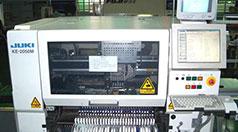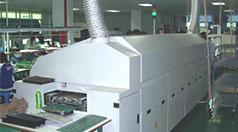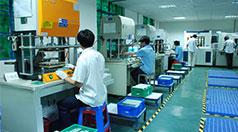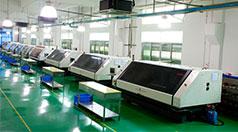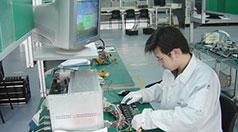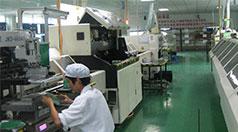What is the purpose of SMT reflow oven with nitrogen?
The main usage of SMT reflow oven with nitrogen (N2) in the PCBA processing is that to reduce the oxidation of the soldering surface and improve the wettability of the solder. As nitrogen is a kind of inert gas, it is not easy to produce compounds with metals. Meanwhile, it’s help avoid the reaction of oxygen in the air with the metal to produce oxidation.
The mechanism for improving the SMT weldability by using nitrogen is that the surface tension of the solder is less than that exposed to the atmosphere, so that the fluidity and wettability of the solder are improved. Secondly, nitrogen reduces the solubility of oxygen (O2) in the original air and substances that can contaminate the soldering surface, greatly reducing the oxidation of the solder at high temperatures, especially in the improvement of the quality of the second surface reflow soldering.
What is the process?
So in fact, when the printed circuit board (PCB) is reflowed on the first side, the surface treatment of the second side of the board actually experiences the same high temperature at the same time, the surface of the board. The treatment will be destroyed due to high temperature, especially the surface treated with OSP surface, and the oxidation is also rapidly proceeding at high temperature. After adding nitrogen, the second surface can be greatly reduced when the first surface is reflowed. The degree of oxidation of the surface treatment allows it to be supported on the second side to obtain the best welding results.
In addition, if the second surface reflow is performed after the first surface reflow is idle and exposed to the air for a long time, it is easy to cause oxidation problems and cause reflow or void soldering during the second surface reflow.
At this time, the advantages of the ENIG board are apparent, because ENIG's surface treatment is "Gold", and at the current reflow temperature, the second surface treatment has almost no problem of oxidation. Spray tin or tin plate will generate IMC before the second surface is not welded because of the high temperature of the first reflow soldering, which affects the reliability of the second surface reflow soldering.
However, Shenzhen Grande must emphasize that “nitrogen is not a cure for oxidation.” If the surface of a part or circuit board is severely oxidized, nitrogen cannot be revived, and nitrogen can only be produced by slight oxidation. In fact, as long as the surface treatment of the PCB and the parts are not oxidized during storage and operation, the addition of nitrogen does not have much effect, at most, it promotes the flow of solder and increases the height of climbing. But then again, there are really few companies that can 100% ensure that their PCB and part surface treatments are not oxidized.
I have listed a lot of advantages of nitrogen. In other words, "Reflow oven" is not profitable without using nitrogen. Let alone the problem of spending large amounts of money by using nitrogen. Just because nitrogen can promote the flow of solder. So it will occur problems. Isn’t sounds weird?
Resistor-capacitor tombstone effect is the result of the flow of solder is too good, it also means that the heating effect is better. Generally, the "tombstone effect" is good for most parts, but it may deteriorate the small-chip like resistors and capacitors. Due to one end of the part is first melted in tin and the end is not melted. When the cohesion of one end of the first tin is strengthened, the part will be pulled. The unmelted tin end will not pull the part, and finally the tombstone will be formed. According to the experience, the tombstone problem is particularly prone to occur. On small resistors and capacitors of 0603 and 0805 package, it is easy to erect parts because of its size and solder paste printing distance.
In addition, nitrogen also increases the "wick effect" of the solder, allowing the solder paste to climb higher along the surface of the solder fillet of the part. This may be a plus for some parts, but for some connectors it may be a cut. Because the soldering feet of the connector are usually the contact points that are connected to other parts. If the soldering point is used, it may cause other problems. Moreover, the distance between the current connector pins is very narrow, and the solder may climb up and occur short.
--- To sum up the previous point of view ---
What are the advantages?
▪ Reducing furnace oxidation
▪ Improving welding capacity
▪ Enhancing solderability
▪ Reducing the void rate. Because the oxidation of the solder paste or pad is reduced, the void is naturally reduced.
What are the disadvantages?
▪ Spending large mounts of money
▪ Increasing the chance of tombstones
▪ Enhancing wick effect
What kind of boards or parts are suitable for nitrogen reflow?
▪ OSP surface treated double-sided reflowed plates are suitable for using nitrogen.
▪ It can be used when parts or boards are not good for tin.
▪ After using nitrogen, pay attention to whether the tombstone is bad or not. So do the soldering foot of the connector.


